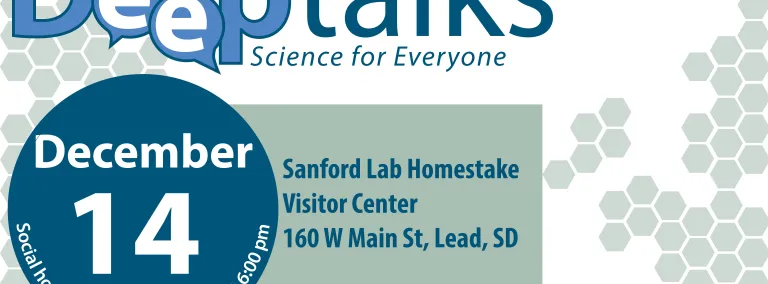Nobel Day highlights Nobel-winning neutrino research
Join Dr. John Wilkerson to learn more about Nobel Prize-winning research and the Nobel Laureates
Early in his career, John Wilkerson worked with two researchers who would later win the Nobel Prize in Physics: Ray Davis Jr. (2002), whose research took place at the Homestake Mine, and Art McDonald (2015), who led the Sudbury Neutrino Observatory (SNO) collaboration in Canada. Both were recognized for their work in neutrino research.
During his Nobel Day presentation, Wilkerson will discuss his work with Davis and McDonald, why researchers go underground to study the sun and his experience at the 2015 Nobel festivities in Sweden. The event will be held Thursday, Dec. 14, at the Sanford Lab Homestake Visitor Center in Lead, S.D. Nobel Day is part of Sanford Lab’s Deep Talks series and is free to the public.
“Working with Ray and Art, both outstanding scientists, was a great experience and honor,” Wilkerson said. “Ray was soft-spoken, but passionate about physics and his research. He would always take the time to engage with the young collaborators. In directing the SNO experiment Art exemplified leadership and collegiality. He valued each collaborator and their contributions, and had the special knack to communicate this respect and appreciation. I strive to follow their examples in my own research program.”
Wilkerson is the principal investigator for the Majorana Demonstrator Project, which is seeking to discover whether the neutrino is its own antiparticle. If it is, it could explain the imbalance of matter/antimatter in the universe. But finding such a rare physics event requires an extremely quiet environment. So, not only did the collaboration build its experiment nearly a mile underground at Sanford Lab, it built a six-layered shield to keep out the radiation that naturally occurs in rock, bananas and even people.
And recently, the Majorana Collaboration made a big announcement: Their experiment was quiet enough to justify building a much larger next-generation experiment.
“When we started this project, there were many risks and no guarantee that we could achieve our goals, as we were pushing into unexplored territory,” Wilkerson said. “It’s very exciting to see these world-leading results. We’ve achieved the best energy resolution of any double-beta decay experiment and are amongst the lowest backgrounds ever seen.”
Wilkerson said the experiment’s success “is a culmination of the collective efforts of all of the Majorana collaborators. This would not have been possible without the outstanding support of the SURF science and operations staffs. I’m extremely appreciative of everyone’s contributions that helped bring us to this point.”
Wilkerson, is the John R. and Louise S. Parker Distinguished Professor and the Director of the Institute for Cosmology, Subatomic Matter, and Symmetries in the Department of Physics and Astronomy at the University of North Carolina. He is also involved in the recently formed Large Enriched Germanium Experiment for Neutrinoless Double Beta Decay (LEGEND) Collaboration, the Karlsruhe tritium beta-decay neutrino mass experiment (KATRIN) and the Helium and Lead Observatory (HALO) supernovae detector experiment. He was a co-recipient of the 2016 Breakthrough Prize for Fundamental Physics that was awarded to five experiments for investigating neutrino oscillations, including the Sudbury Neutrino Observatory (SNO) solar neutrino experiment where he served as the leader of the data acquisition group and was involved in the development and deployment of the SNO 3He detector array.
Nobel Day begins at 5 p.m. with a social, with the talk starting at 6 p.m. Sponsors for the event are Crow Peak Brewing Company of Spearfish and Gypsy Rose Tattoo of Rapid City. The event includes light refreshments and free beer is available for those 21 and older.
